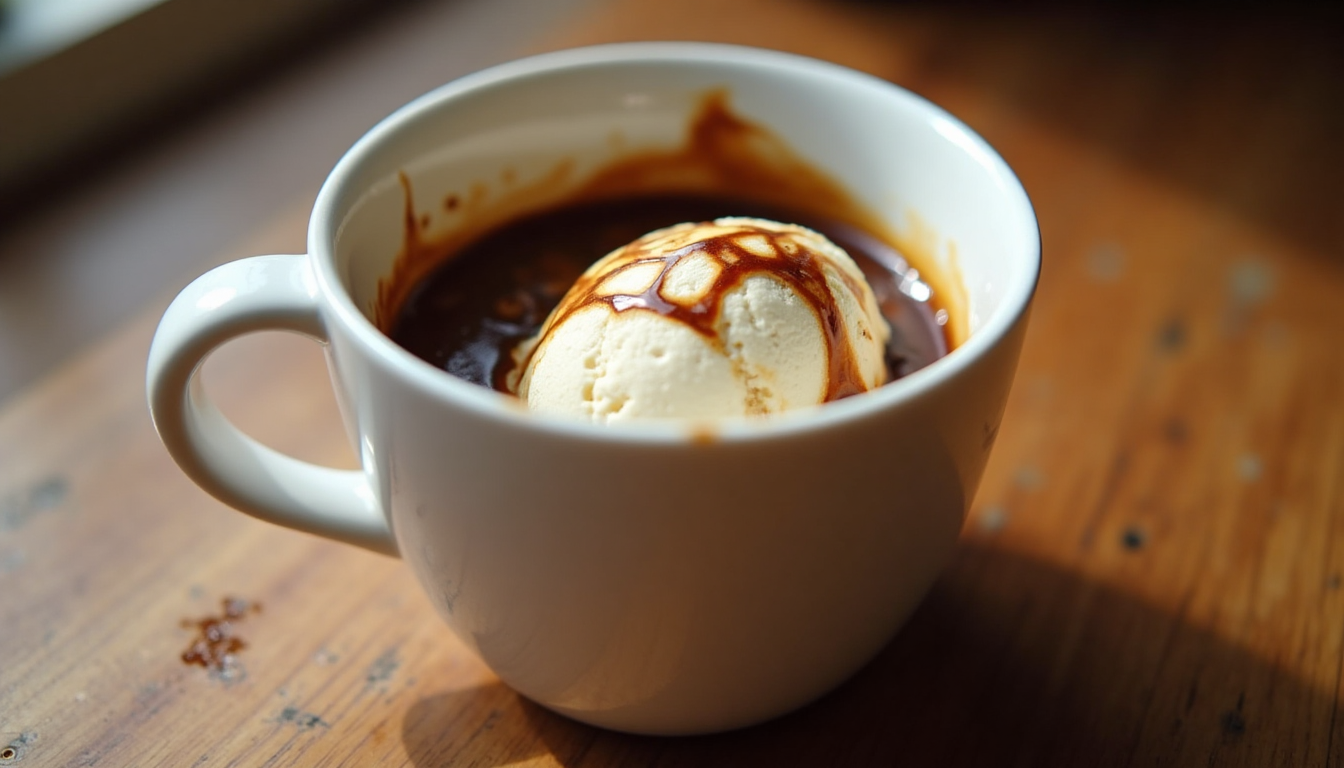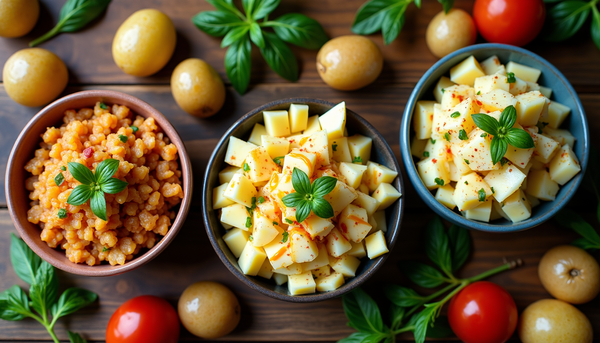Why Affogato Broke My Brain (And Fixed It Again)

I once spent three hours trying to make the "perfect" affogato.
Three. Hours.
For a dessert that literally translates to "drowned" and consists of ice cream + hot coffee. I measured water temperatures, timed extraction rates, sourced gelato from two different Italian imports shops, and took approximately forty-seven photos for my Instagram story. The result? A lukewarm mess that looked nothing like the food blogger photos I'd been obsessing over.
That night, sitting in my kitchen at 11 PM with melted vanilla ice cream and cold espresso, I had what you might call an existential food crisis.
The Instagram Lie (And Why We Keep Buying It)
Here's what nobody tells you about affogato: it's not photogenic for more than thirty seconds. The moment that hot espresso hits the gelato, you're in a race against thermodynamics. The beautiful contrast between the dark coffee and pristine white ice cream? Gone faster than your motivation to meal prep on Sunday.
But scroll through #affogato on Instagram and you'll see thousands of perfectly styled shots. Pristine scoops sitting in artisanal cups, espresso suspended mid-pour like some caffeinated Niagara Falls. It's all lies. Beautiful, seductive lies that made me think I was doing something wrong when my affogato looked like... well, like ice cream melting in coffee.
The truth is, affogato is supposed to be messy. It's supposed to be imperfect. The Italians who invented this weren't thinking about content creation—they were thinking about the perfect end to a meal, something that bridges the gap between dessert and coffee culture.
(Side note: I once asked my nonna about affogato photography and she looked at me like I'd asked about photographing breathing. "You eat it, Marco. You don't pose with it.")
The Science of Why This Works (Spoiler: It's Not Just the Caffeine)
Okay, let's talk about why affogato actually makes sense, beyond the obvious "hot thing meets cold thing" dynamic.
Temperature contrast is just the beginning. When hot espresso hits cold ice cream, you create multiple textures simultaneously. The immediate contact zone becomes this coffee-flavored cream situation, while the center of the ice cream stays cold and pristine. You're basically eating three different desserts in one spoon: the melted outer layer (coffee milkshake vibes), the partially melted middle (somewhere between gelato and soup), and the still-frozen core (pure ice cream satisfaction).
But here's where it gets interesting from a sensory perspective. Your mouth experiences this incredible temperature gradient that keeps changing as you eat. The bitter espresso cuts through the sweetness of the ice cream, but not immediately—there's this delayed reaction as the flavors meld and separate on your palate.
I learned this the hard way during my aforementioned three-hour affogato marathon. I was so focused on getting the "perfect" pour that I missed the entire point. Affogato isn't about precision; it's about embracing the chaos of transformation.
My Accidental PhD in Affogato Studies
After my initial failure, I became accidentally obsessed. Not with perfecting the technique (learned my lesson there), but with understanding why this simple combination felt so... right.
I started experimenting, but not in the precious food blogger way. More like a slightly unhinged grad student way. I tried different ice cream temperatures (pro tip: let it sit out for exactly three minutes if you want slightly slower melting). I experimented with espresso temperatures (too hot and you get soup, too cool and you lose the magic). I even tried different pouring techniques, which led to some truly questionable kitchen moments.
The best affogato I ever made happened when I stopped trying. I was tired, slightly stressed about a deadline, and just wanted something sweet and caffeinated. Grabbed whatever vanilla ice cream was in the freezer, pulled a shot of espresso from my mildly temperamental machine, and dumped it over the ice cream while standing at my counter in pajamas.
It was perfect. Not Instagram perfect—actively unphotogenic perfect. The kind of perfect that exists only in the moment you're experiencing it.
The Paradox of Simple Things
Here's what affogato taught me about food culture (and maybe life, but let's not get too deep): we've become so obsessed with optimizing experiences that we forget to actually have them.
Affogato exists in this weird space where it's simple enough that anyone can make it, but delicious enough that it feels special. It doesn't require technique or expensive equipment or exotic ingredients. It just requires ice cream and coffee and the willingness to eat something before it melts.
That last part is crucial. Affogato is inherently anti-performative. You can't make it ahead of time. You can't really photograph it properly. You just have to make it and eat it and trust that the experience is worth more than the documentation.
In a food culture obsessed with optimization, affogato is refreshingly analog. It's not about getting the most likes or following the most precise recipe. It's about understanding that sometimes the best things are the ones that happen quickly and disappear quickly and exist primarily in your memory and taste buds.
What Actually Matters (Spoiler: It's Not What You Think)
After months of accidental affogato research, here's what I learned actually matters:
Use ice cream you like. Revolutionary, I know. But seriously, if you hate vanilla, don't use vanilla just because it's "traditional." I've had incredible affogatos with pistachio gelato, brown butter ice cream, even good old-fashioned chocolate chip. The coffee will complement whatever you choose.
Make coffee you'd actually drink. If your espresso tastes terrible on its own, it's not going to magically improve when poured over ice cream. But it doesn't need to be perfect either. I've made great affogatos with coffee from a moka pot, a French press, even really strong cold brew that I heated up (don't @ me, coffee purists).
Embrace the mess. The melting is not a bug; it's a feature. Stop trying to control it and start enjoying it.
Eat it immediately. This isn't about impatience; it's about respecting the nature of the dessert. Affogato exists in time the way music exists in time. You can't pause it without changing it fundamentally.
The Bigger Picture (Or: Why I'm Writing 3000 Words About Ice Cream and Coffee)
I realize I've spent an embarrassing amount of mental energy thinking about affogato. But here's why I think it matters in ways beyond just dessert:
In our current food landscape, everything is content. Every meal is an opportunity for optimization, documentation, or performance. We've turned eating into a competitive sport where the goal seems to be proving how well we can execute someone else's vision of perfection.
Affogato resists this. It's too simple to be impressive, too ephemeral to be properly documented, too personal to be standardized. It forces you to be present in a way that's becoming increasingly rare.
When I make affogato now (which is embarrassingly often), I don't measure anything. I don't time anything. I just pour hot coffee over cold ice cream and eat it quickly, usually while standing in my kitchen, often while wearing questionable clothing. It's become this tiny act of rebellion against the idea that food experiences need to be optimized or shared to be valid.
Your Turn (But Make It Yours)
So here's my completely unsolicited advice: make an affogato. Tonight, if possible. Don't research the best gelato brands or optimal espresso temperatures. Just put some ice cream in a bowl, pour some hot coffee over it, and eat it before it melts completely.
Notice how the temperature changes as you eat. Notice how the flavors evolve. Notice how it makes you feel to eat something that exists only in the present moment.
And if you feel the urge to photograph it, ask yourself: am I documenting this to remember it, or to prove it happened? Because affogato doesn't need to be proven. It just needs to be experienced.
The Italians were onto something with this one. Sometimes the best things in life are the simplest ones, the ones that refuse to be optimized or perfected or turned into content. Sometimes the best things just need to be eaten, quickly and messily and with complete attention.
Sometimes the best things are the ones that melt.
What's your relationship with simple pleasures? Do you find yourself overcomplicating things that are meant to be easy? I'd love to hear about your own affogato adventures (or disasters) in the comments.




